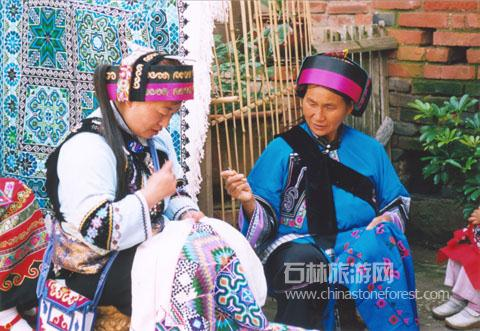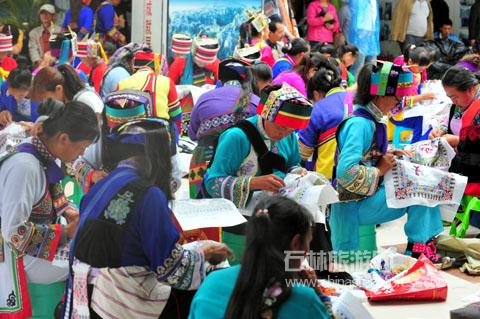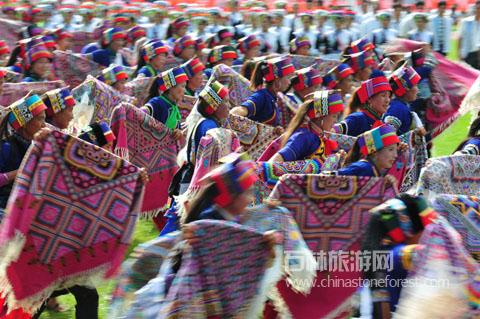
Sani
embroidery bag
Skilled women
neither mark nor draw lines when embroidering - they only hold needles to
embroider the sun and the moon, mountains and rivers, birds and beasts, flowers
and fish with their bare hands.
Sani
embroidery originated in Tang and Song Dynasties and began to flourish in Ming
and Qing Dynasties.

Old women embroidering

Young
girls embroidering
Sani embroidery techniques include cross stitch, pile stitch,
flat stitch, rolling stitch, stereo stitch, messy stitch, applique stitch, and
inner cutting & applique stitch, etc. Traditionally, the color tone of Sani
embroidery is black clothes, black background with white stitch, and black
background with colorful stitch; and color styles can be divided into three:
bright, elegant and gray. Embroidery patterns mainly include natural objects in
the living environment, scenes of human production and life, and decorative
patterns. The inheritance of Sani embroidery process is a folk heritage.

Mass
embroidery applying for Guinness
Embroidery
products include women's kerchief, belt, bag, shoe upper covering, and lace,
etc. The designs on various embroidery products include plants, animals,
celestial bodies and nature, human appearances, activity scenes, texts, and
construction tools, etc., for example, “good
fortune and luck”, “flowers”,
“grain
harvest”, “fish
and water”, and “the
sun and the moon”.
In June 2008, Yi (Sani)
embroidery was included in the list of China intangible cultural heritage by
the State Council.

Dance themed embroidery
![]() No. 53012602000141, Anne, Yunnan Public Network
No. 53012602000141, Anne, Yunnan Public Network




